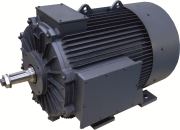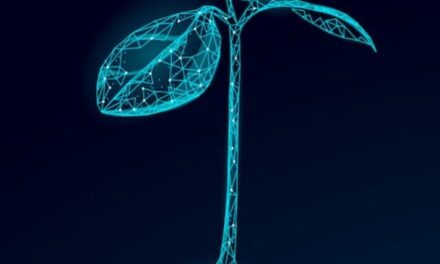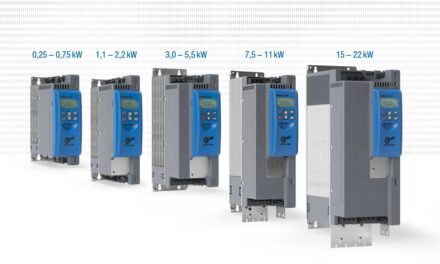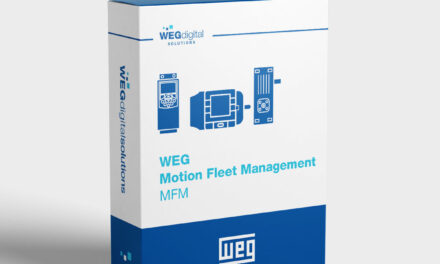 China’s near dominance in the supply of rare earth magnets has become a source of consternation to motor manufacturers and end users alike, with fears of huge increases in prices. But Exico Electric Motors’ managing director Jerry Hodek says that the supply issues have driven innovation in many fields.
China’s near dominance in the supply of rare earth magnets has become a source of consternation to motor manufacturers and end users alike, with fears of huge increases in prices. But Exico Electric Motors’ managing director Jerry Hodek says that the supply issues have driven innovation in many fields.
Necessity is the mother of invention and when it comes to the rare earth magnets that are key to today’s permanent magnet motors there has been much research dedicated to getting more from less.
A permanent magnet is a ferromagnetic material which creates its own field without needing a continuous electric current. Motors built using permanent magnets can operate at higher temperatures than other types of motors due to non-existent rotor losses, while offering higher torque capacity and faster acceleration than asynchronous motors.
Of course, these advantages come at a cost, but in many cases machine builders find these costs are more than outweighed by the ability to use smaller motors to achieve the same performance, or to offer better overall performance.
But it is in discussions about energy efficiency where permanent magnet motors have really come to the fore, with developments in rare earth magnets key to achieving the various energy efficiency classes. In the European market, as early as 2011, IE2 was brought in as the minimum energy efficiency standard for induction motors in S1 duty and in January 2015 IE3 (or IE2 with an inverter) was legally specified as the minimum efficiency for power ratings from 7.5 kW to 375 kW.
IE4 super premium efficiency motors are already on the market and it surely won’t be long before they become a de facto standard, further driving demand for rare earth magnetic materials. IE5 has yet to be defined as a formal standard, but a number of motor manufacturers are already talking about such motors. Thus we can be sure that demand for rare earth magnets is set to increase.
Rare earth magnets have been in regular use since about 1975 and are around 200% more powerful than ferrite magnets. Despite the name, rare earth magnets are not that rare. Deposits of neodymium, for example, are about as common as copper, tin, cobalt, nickel and lead. Neodymium magnets are the most powerful and are the mainstay of motor applications. However, they have a relatively low Curie temperature, at which point they begin to lose magnetic power. Thus for high temperature applications samarium cobalt magnets are often preferred.
Originally rare earth magnets were expensive, which limited their use, but over the years their prices have dropped and their uses have increased. Now, with energy efficiency so important, they are more popular than ever.
Global rare earth magnet supply
Global extraction of rare earth materials saw India and Brazil as the leading producers in the 1950s, until the USA took over as the main supplier through the 1970s and 1980s. US output declined during the late 1980s and early 1990s, with South African and Indian output increasing. But all of this activity was quickly dwarfed by the rising scale of Chinese production.
Today China supplies around 95% of the world’s rare earth elements. However, much of this production is going into domestic consumption, sparking world-wide fears of rising prices and shortages. Many reports of 10-20 years ago predicted that demand would eventually exceed supply. In 2009 China announced plans to reduce exports in order to conserve resources. Then in 2010 it completely embargoed exports to Japan over a dispute about oceanic boundaries.
With the prospect of more embargos, alternatives to rare earth magnets are now being investigated around the world. For instance, the American REACT (rare earth alternatives in critical technologies) program aims to find a low cost and reliable alternative material and similar efforts are being made elsewhere.
As an alternative to rare earth materials, the use of manganese-bismuth compounded with cobalt or cobalt-iron seems to offer some potential. As yet, the performance does not match neodymium, but research is closing the gap. Other areas of focus are iron nitride materials which, with the right microstructure, are predicted to offer more than double the energy of today’s rare earth materials. The trick appears to lie in perfecting the fabrication methodology for bulk production.
The rare earth material cerium, also offers potential, being relatively common and low cost. It may never match the best performance figures of neodymium, but could be used in motors destined for medium duties, thus conserving neodymium for the most demanding applications.
Another option is to make current motor designs better. One such option that is looking promising is to use a hot deforming process rather than sintering to make neodymium magnets. This aligns the nanometre-scale neodymium crystal grains to produce a magnet that performs better at elevated temperatures. This process is already proving popular with motors used in electric vehicles and is attracting the attention of major automotive companies.
Another recent innovation is the development of nanocomposite permanent magnets. Rather than developing more powerful magnets by combining elements into a single magnet alloy using conventional processes, the new technique focuses on combining elements at a nanometre scale. Researchers predict that such nanocomposite magnets could offer double the maximum energy of today’s best neodymium alloy products.
Electric motor developments
With many of these developments still some years from commercial availability, and with neodymium prices rising, the motor manufacturers themselves have been busy optimising motor designs to get improved performance without increasing neodymium content.
Design improvements have focussed on reducing the various sources of losses within a motor. Improvements have been made by optimising geometries and tolerances, while manufacturers have worked to optimise designs of ferrite magnet motors for energy efficiency. New types of motor have also been developed, such as synchronous (switched reluctance) motors and permanent (ferrite) magnet assisted synchronous motors.
The World Trade Organisation has been monitoring the situation on rare earth materials and as a result China has lifted all export quotas, although licences are still required. New deposits outside of China have also been identified; old, disused mines in the US are reopening, and greater efforts at recycling are all helping to alleviate the dependence on Chinese supplies.
For more information, please visit the Exico website at www.exico.co.uk



